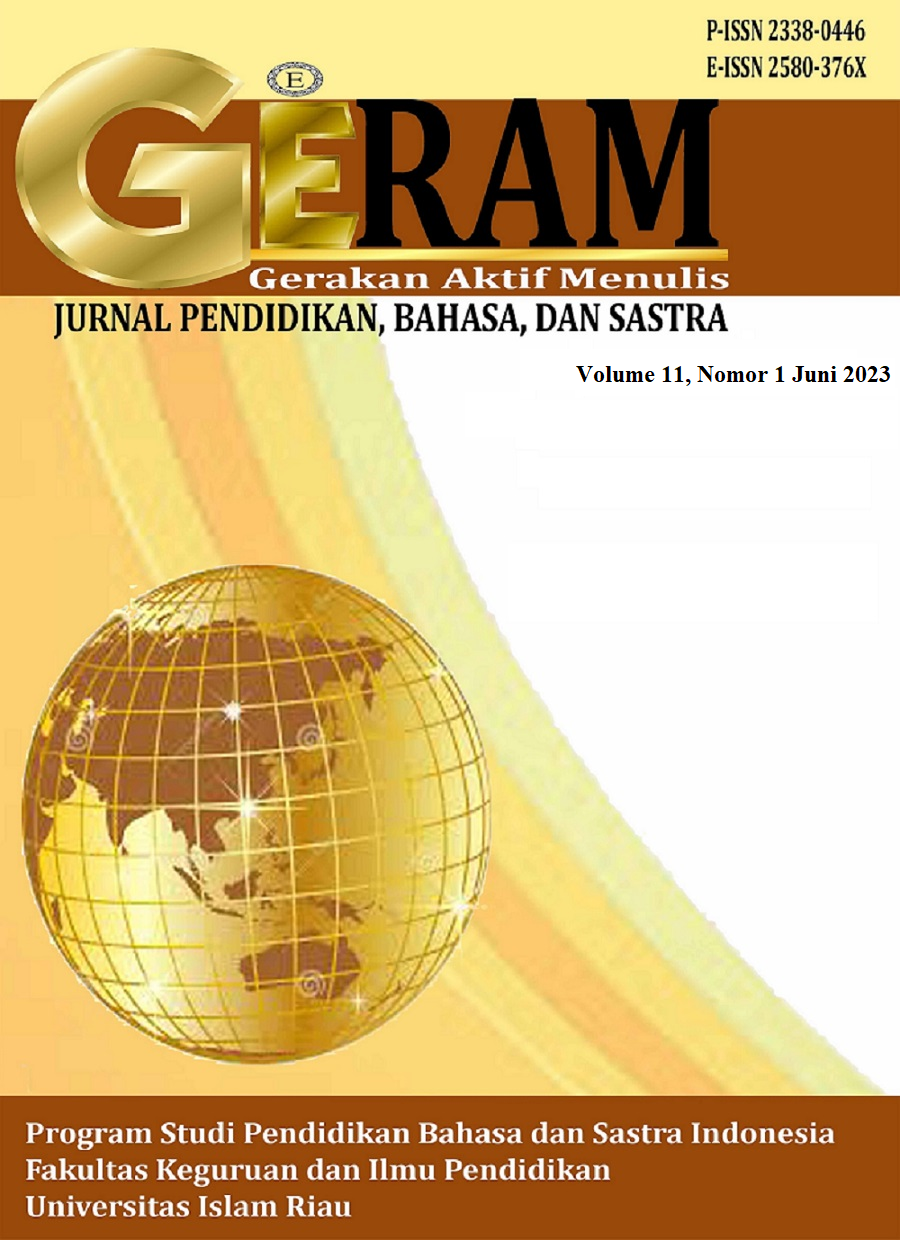Tutur Kata Penonton Piala Dunia 2022
Keywords:
world cup, viewers, speechAbstract
2022 World Cup international event. Furthermore, the context of the audience's speech while watching together provides an overview of how Indonesian people express themselves through speech when watching World Cup matches. The purpose of this study is to explore the forms of speech acts by the public during collective World Cup viewing. The research was conducted in the city of Kolaka, Southeast Sulawesi, using qualitative research methods. Data collection techniques included observation, recording, note-taking, and interviews. Based on the described research results, the identified forms of speech acts tend to be expressive and emotional. Declarative speech acts accounted for 6 instances, imperative speech acts for 4 instances, and interrogative speech acts for 4 instances. The audience's speech patterns were influenced by factors such as the atmosphere, gender, and age. The study findings illustrate the dynamic nature of the audience's response, as the unpredictable World Cup matches often exceeded the audience's expectations. Consequently, people's words when watching the 2022 World Cup together could change depending on the ongoing match situation and conditions. Emotions such as joy, disappointment, sadness, annoyance, and disbelief were common expressions witnessed during these matches.
Downloads
References
Achmad & Abdullah, A. (2013). Linguistik Umum. Jakarta: Erlangga.
Alwi, H. (2002). Tata Bahasa Baku Bahasa Indonesia (Edisi Ketiga). Jakarta: Balai Pustaka.
Amini, K., A., & Rahmi, H., M. (2022). Bentuk, Jenis, dan Fungsi Tindak Tutur Ilokusi Penjual dalam Menawarkan Dagangan di Pasar Kota Bukittinggi. Geram, 10 (2).
Bogdan & Biklen, s. (1992): Qualitative Research For Education. Boston, MA: Allyn and Bacon.
Chaer, A. (2010). Sosiolinguistik. Jakarta: Rineka Cipta.
Danurwindo. (2017). Kurikulum Pembinaan Sepakbola Indonesia. Jakarta: Persatua.
Hermaji, B. (2019). Teori Pragmatik. Yogyakarta: Magnum Pustaka Utama.
Kurniati, L. (2015). Bahasa Ibu dalam Pembelajaran Anak di Sekolah. Jurnal Pesona,1(1). hlm 48. DOI:https://doi.org/10.26638/jp.73.2080
Larashaty, A. A. (2019). Ekspresi Perempuan Penggemar Klub Sepak Bola saat Berada di Stadion (Studi Kasus Anggota Komunitas Viking Girls Kota Bandung). Skripsi. Universitas Pendidikan Indonesia Bandung.
Moleong, L. (2001). Metodologi Penelitian Kualitatif. Bandung: Remaja Rosdakarya.
Nasrullah, R. (2015). Media Sosial: Perspektif Komunikasi, Budaya, dan Sosioteknologi. Simbiosa Rekatama Media.
Nina, R. N., Sugiarto, R. A. (2020). Analisis Tururan Deklaratif, Interogatif, dan Imperatif pada Film Habibie dan Ainun I. Lingua STIP Mumammadiyah Bogor, 1(1).
Purba, A. (2011). Tindak Tutur dan Peristiwa Tutur. Universitas Jambi, 1(1).
Rahardi, K. (2005). Pragmatik: Kesantunan Imperatif Bahasa Indonesia. Jakarta: Erlangga.
Solissa, E. M., dkk. (2023). Analisis Tindak Tutur Direktif dalam Novel Layangan Putus Karya Mommy ASF. Journal on Education, 6(1).
Subagyo, I. (2010). Pedoman Pelaksanaan Pengembangan Tes Kecakapan “David Lee” untuk Sekolah Sepakbola (SSB) Kelompok Umur 14-15 Tahun. Yogyakarta: FIK UNY.
Sugiyono. (2013). Metode Penelitian Kuantitatif, Kualitatif, dan R&D. Bandung: Alfabeta.
Takwa, T., Nasir, A., Widiyawati, E. (2022). Tindak Tutur Representatif dalam Pembimbingan Tugas
Akhir pada Program Studi Pendidikan Geografi Universitas Sembilanbelas November Kolaka. Geram,10 (2).

















